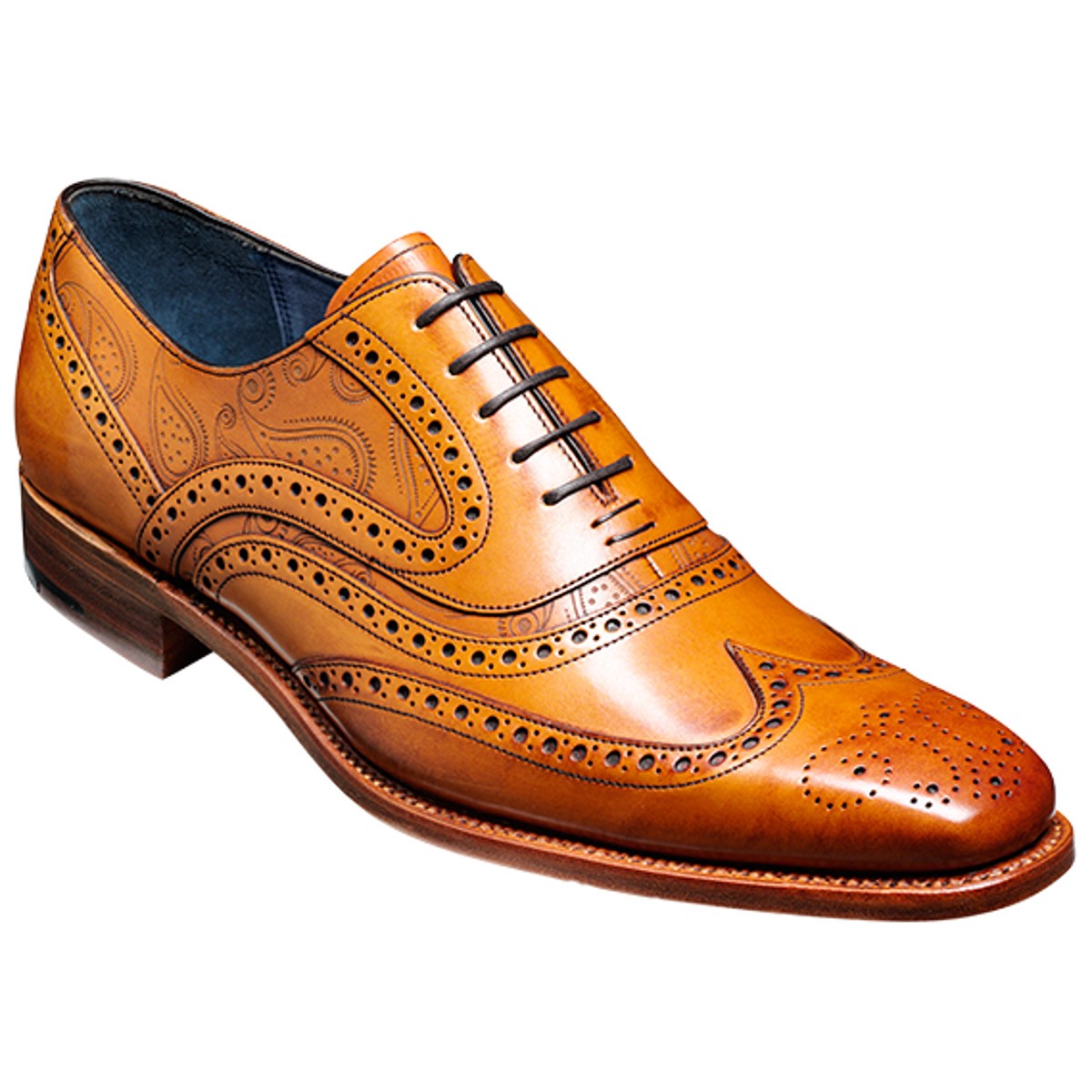Brogues 9th March 2016

Derby brogues, oxford brogues, wingtips, Adelaide brogues and more...
As well as being a type of gentleman’s shoe, “brogue” is also used to refer to the charming accent of Ireland and sometimes for other accents of the British Isles such as the West Country or Scottish.
The association of the term with Ireland is due to the brogue shoe’s origin on the Emerald Isle, coming from the Old Irish Gaelic word bróg (shoe).
Originally being a basic shoe made by hand in small home-workshops, the brogue was characterised by being constructed from untanned hide featuring perforations, which allowed water to drain when the wearer was crossing wet terrain such as the many bogs which Ireland is so well-known for. Although modern brogues’ perforations are only superficial, it is still these punchings which are the signature of the shoe-type to this day.
Coming into the English language about 400 years ago, the word “brogue” came to refer to a men’s country walking shoe. In contrast to the modern day, the brogue shoe-type was not originally considered appropriate for other activities such as business or for social occasions.
Due to changings fashions and opinions over time, the opposite is essentially true today: brogue shoes (or at least the semi-or quarter brogue versions) are absolutely appropriate as formal or semi-formal business wear, the wingtip at least is appropriate for casual socialising (for example, for an evening out). Although going walking in the country wearing brogues would not currently necessarily be considered “inappropriate”, as such, there are far better types of footwear for outdoor activities nowadays, and wearing brogues for a walk in the country would probably strike most as a slightly strange use of the shoes.
Brogues come in four toe cap types:
- Full brogues (AKA “wingtips”)
- Longwing brogues
- Semi-brogues
- Quarter-brogues
… and four closure styles:
- Derby
- Oxford
- Monk strap
- Ghillie
Let’s take a look at the toe cap styles in more detail…
Wingtip / full Brogues:
These are perhaps the most archetypal brogues and the most recognisable, while also being the least formal of the brogue types. The term “wingtip” refers to the leather toe cap, shaped like a “W” and extending backwards from the toe along the sides of the shoes.
This toe cap usually features the perforation/punching that is typical of the brogue, although there is a variation of the wingtip brogue with no such perforations, called the “austerity brogue” and there is also the opposite of the austerity brogue, which features a wingtip but without perforations, this is called the “blind brogue”.
Another variation of this type is the “co-respondent shoe”, which is a wingtip brogue constructed from two (usually contrasting) colours.
Longwing Brogues:
While similar to the full brogue, the longwing’s “wings” extend all the way around the shoe instead of tapering out at the sides, meeting at the back of the heel. These are currently less popular than wingtip brogues and so less often encountered.
Semi- / Half-Brogues:
More formal than the full brogue, the semi-brogue does not feature a wingtip but rather a straight-bordered toe cap with perforations along the straight edge of the toe cap, as well as a brogue pattern on the centre of the toe cap itself.
Quarter-Brogues:
The Alfred Sargent Moore is a particular style of quater brogue known as an Adelaide brogue.
Arguably simply a variation of the semi-brogue, quarter brogues differ from semis only in that, while they share the perforations along the straight edge of the toe cap, they do not feature a brogue pattern on the centre of the toe cap itself, making them both plainer and more formal than the semi-brogue.
Worthy of a special mention is the Ghille brogue. As the name might suggest, these are a Scottish variation of the brogue and lack a tongue, being tied with very long laces which wrap around the legs above the ankle and are tied around the calf. These form a component of traditional Scottish formal attire and are often worn with kilts at formal events such as weddings.
We have a great selection of brogues of the most popular types, why not take a look?
The Barker Woody is in a class of its own, and very popular.
If you enjoyed this article - please share with your friends...
